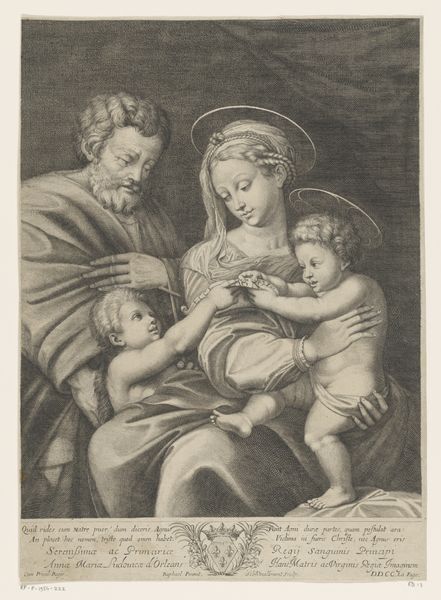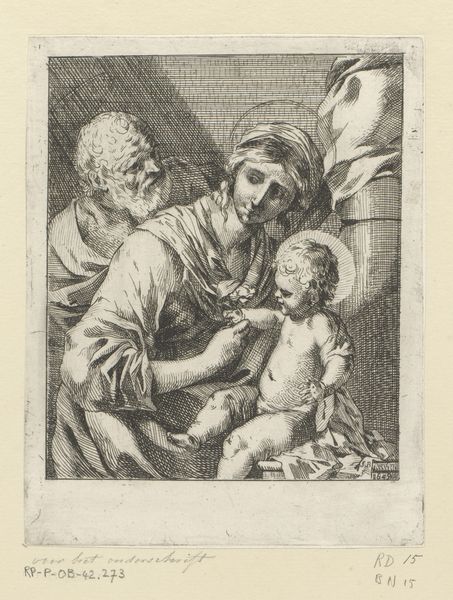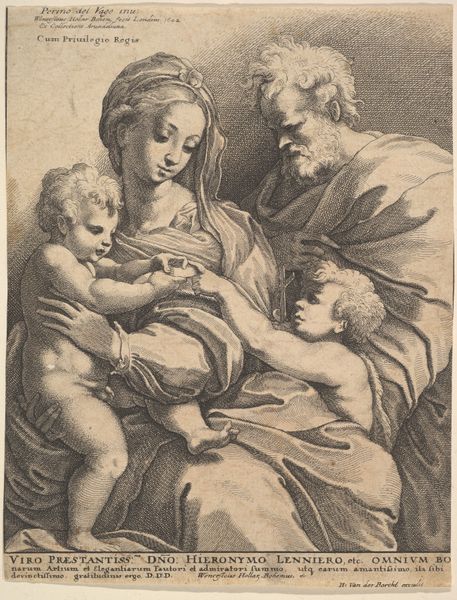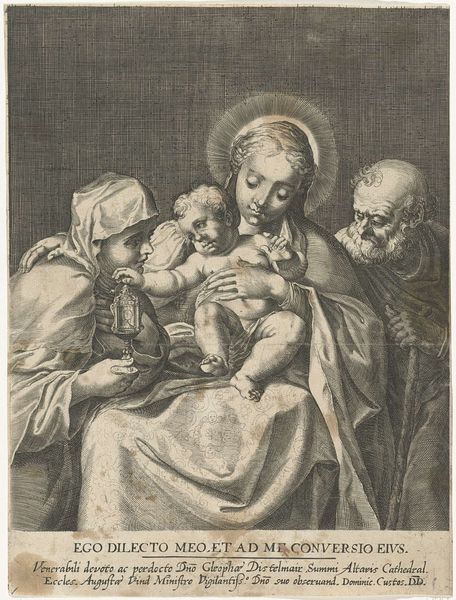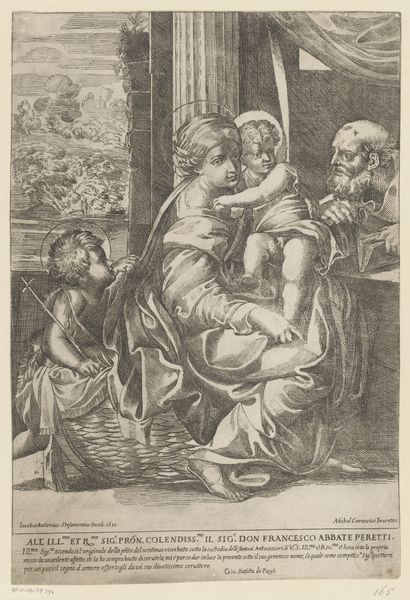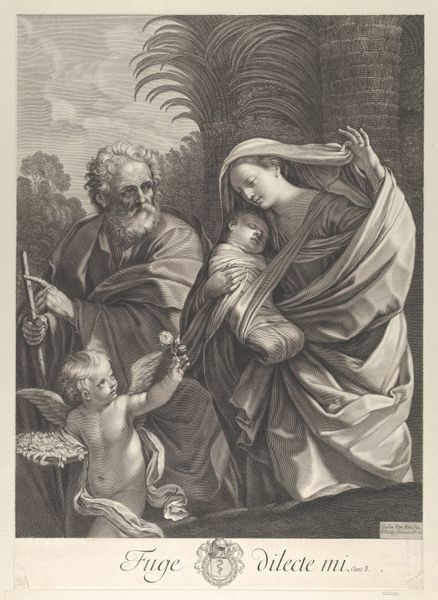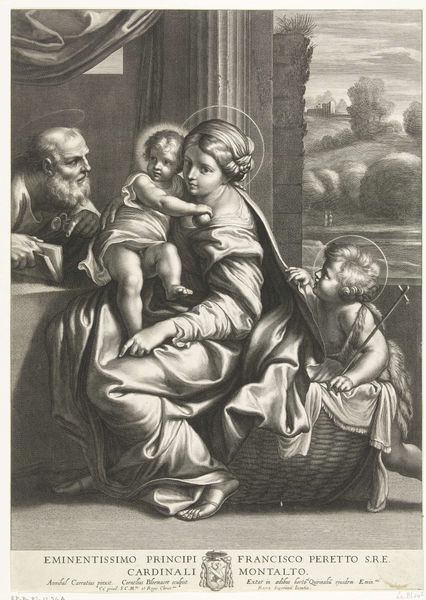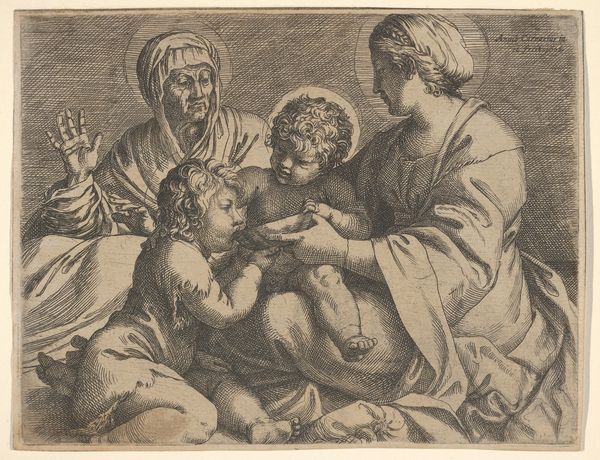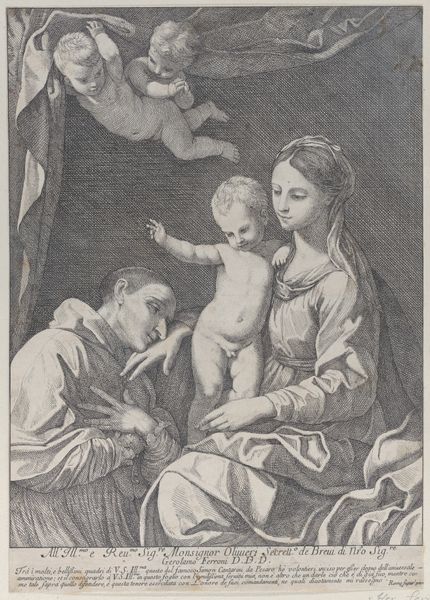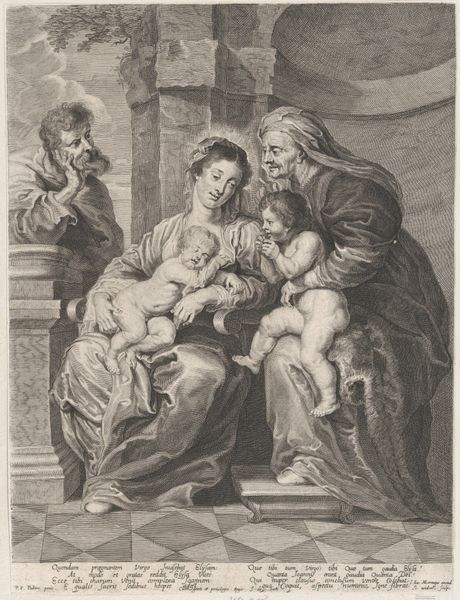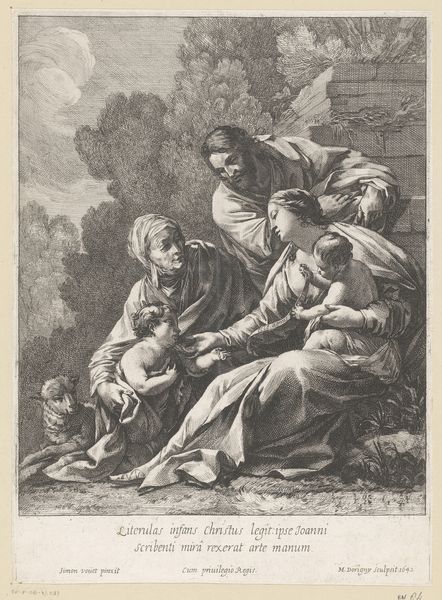
The Virgin nursing the infant Christ, Joseph at left, after Reni 1595 - 1705
0:00
0:00
drawing, print, engraving
#
portrait
#
drawing
#
baroque
# print
#
history-painting
#
italian-renaissance
#
engraving
#
portrait art
#
virgin-mary
Dimensions: Sheet (Trimmed): 10 5/16 × 8 1/8 in. (26.2 × 20.7 cm)
Copyright: Public Domain
Editor: This engraving, "The Virgin nursing the infant Christ, Joseph at left, after Reni," dates somewhere between 1595 and 1705. It depicts the Virgin Mary nursing Jesus, with Joseph looking on. I’m struck by the almost geometric arrangement of the figures; it feels very deliberate. How do you interpret the composition? Curator: The emphasis here, I would suggest, lies in the formal relationships within the engraving itself. Notice how the artist has structured the scene using a pyramidal arrangement. Mary’s head serves as the apex, drawing our eye downward along the cascading lines of her draped clothing to the Christ child. Consider how the engraver utilizes light and shadow—chiaroscuro—to model the forms. Do you see how that adds volume? Editor: Yes, it gives them a sculptural quality despite being a two-dimensional print. But why such an ordered and, dare I say, artificial construction? Curator: Precisely! It’s an artificial construction aiming at ideal beauty. The balanced composition speaks to a desire for harmony and order. Think of the contrasting textures, achieved through the meticulous lines. Observe the smoothness of Mary's skin compared to the intricate patterns in Joseph's beard. Editor: That contrast is definitely apparent. So, rather than focusing on any narrative, we’re meant to appreciate the pure skill and the considered design of the piece? Curator: Exactly. It's an exercise in aesthetic arrangement. Reflect upon the engraver's command of line and form; how they used the tools to realize their vision of devotional subject. What is left after that reflection? Editor: I see it now. The composition, the use of light and shadow… they all contribute to this overwhelming sense of balance and idealized form. Thanks, I now view the picture as much more intricate. Curator: And I hope you consider how engravings like these were distributed and influenced aesthetic preferences. The image, distilled through line, carried those values far and wide.
Comments
No comments
Be the first to comment and join the conversation on the ultimate creative platform.

